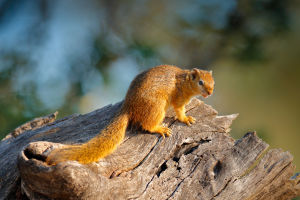The first thing that strikes anyone who encounters a Hoopoe is its extraordinary appearance. The most notable feature is its crest, made up of long feathers on top of its head. This crest can be raised or lowered depending on the bird's mood, adding to its charm.
The body of the Hoopoe is adorned with cinnamon-colored feathers, contrasted by bold black and white stripes on its wings and tail. Its beak is long, narrow, and slightly curved downward, perfect for foraging for insects. Its gentle, repetitive "oop-oop-oop" call is another distinctive feature, often heard during the breeding season.
Where Do Hoopoes Live?
The Hoopoe has a wide distribution range, found across Europe, Asia, and North Africa. In Europe, it is commonly seen during the summer months, while in Africa and Asia, it is found throughout the year. The Hoopoe is a frequent sight in both rural and urban areas, often spotted in gardens, open woodlands, and agricultural fields. These birds thrive in environments where there is access to food, particularly insects, which make up the majority of their diet.
Habitat and Behavior
Hoopoes prefer open spaces like woodlands, gardens, and agricultural fields. They are usually seen foraging on the ground, using their long, curved beaks to probe the soil in search of insects, worms, and other small invertebrates. Though they are solitary birds, they are not particularly shy, often seen hopping or flying between trees in search of food. When feeling threatened, however, they may fly off quickly, disappearing into nearby trees. They are also known for their calm demeanor, often resting in the shade during the hotter parts of the day.
The Hoopoe’s Nesting and Reproduction
The reproductive habits of the Hoopoe are equally fascinating. These birds build their nests in tree cavities or old buildings, where the female lays 6 to 7 eggs. Both parents take turns incubating the eggs and feeding the chicks after they hatch. Once hatched, the chicks are fed insects and other small prey, which are regurgitated by the parents. After a few weeks, the chicks become independent and begin exploring the world on their own. The nesting process is an important part of the Hoopoe’s lifecycle, ensuring the survival of future generations.
Migration and Global Distribution
Hoopoes are migratory birds, though not all populations migrate. Those in northern regions, like parts of Europe and Asia, migrate to warmer climates in the winter, while birds in southern regions tend to remain year-round. During migration, the Hoopoe faces numerous challenges, including long distances, unpredictable weather, and the availability of food. Despite these challenges, the bird has an incredible ability to adapt, making it one of the more resilient species in the bird world.
Conservation and Protection
While the Hoopoe is not currently listed as endangered, it faces challenges due to habitat destruction and climate change. Urbanization and agricultural expansion have reduced the availability of suitable nesting sites, and changes in climate patterns can affect the bird's migration and food availability. As a result, conservation efforts are important to ensure that these beautiful birds continue to thrive. Bird watchers play a key role in promoting awareness and protecting the habitats that the Hoopoe relies on.
A Bird to Admire
The Hoopoe is a bird that truly deserves admiration for its beauty, resilience, and fascinating behaviors. Whether it’s its majestic crown of feathers, its unique call, or its migration across continents, the Hoopoe is a symbol of the wonders of the natural world. As we continue to protect the environment and preserve the habitats of these remarkable birds, we ensure that future generations will be able to witness the marvel of the Hoopoe for years to come. Keep your eyes peeled and your ears open—you never know when you might spot one of these extraordinary birds in your own backyard!


